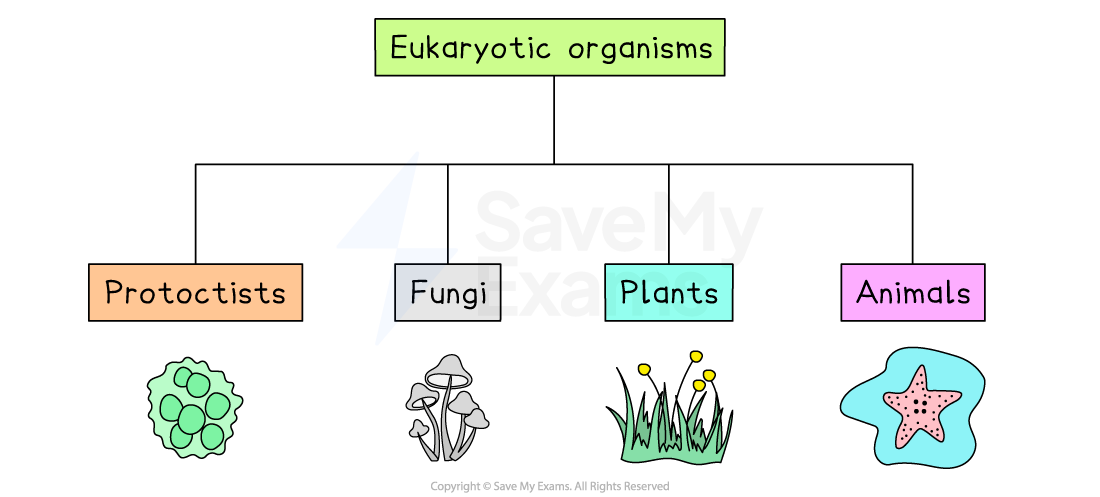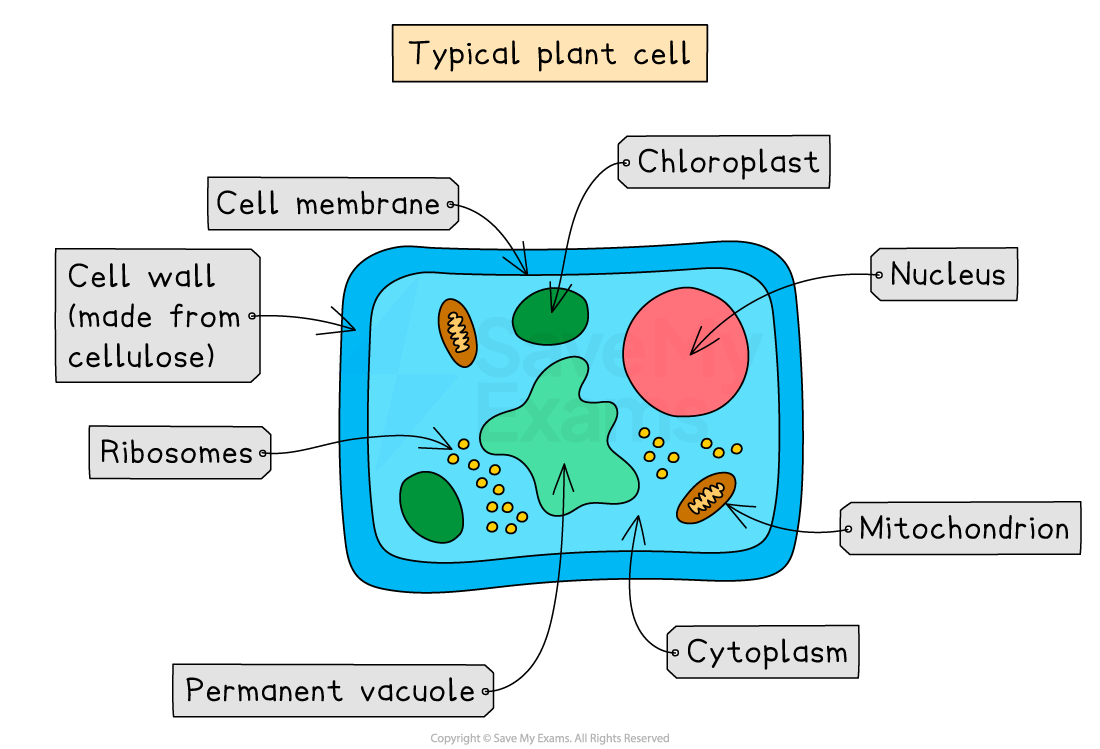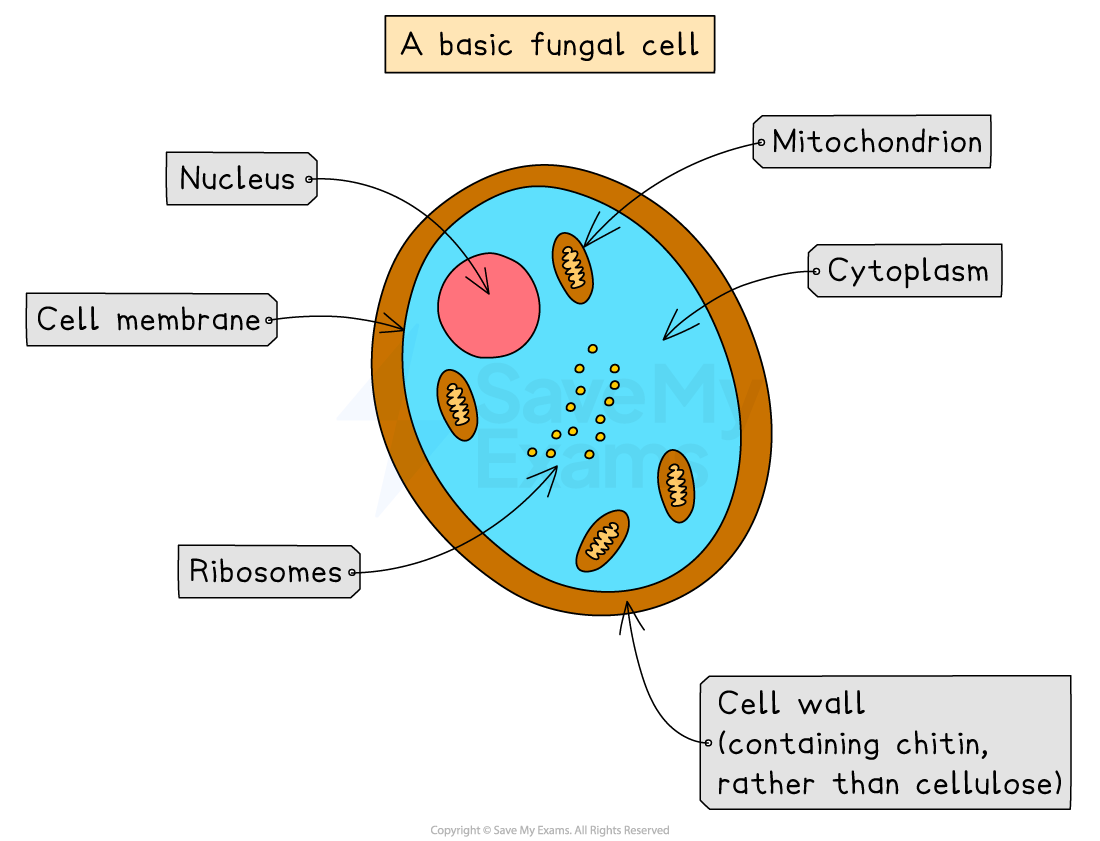Common Features: Eukaryotic Organisms (Edexcel IGCSE Biology): Revision Note
Exam code: 4BI1
Common Features of Eukaryotic Organisms: Basics
All living organisms share characteristics. Organisms can be grouped together based on common features they share into the following groups:
Plants
Animals
Fungi
Protoctists
Prokaryotes
Organisms in the first four groups of this list (plants, animals, fungi and protoctists) are all eukaryotic organisms (also known as eukaryotes)

Eukaryotic organisms can be multicellular or single-celled. The common feature of all eukaryotes are cells that contain a nucleus with a distinct membrane

An animal cell (left) and plant cell (right) as seen under a light microscope. They are both eukaryotic cells as they both have a distinct membrane-bound nucleus.
Prokaryotic organisms (also known as prokaryotes) are different from eukaryotes as they are always single-celled and their cells do not contain a nucleus
Bacteria are prokaryotic organisms
The genetic material of prokaryotic cells is found in the cytoplasm as a single, circular chromosome of DNA
Prokaryotic cells are also substantially smaller than eukaryotic cells
Animals
The main features of animals:
They are multicellular
Their cells contain a nucleus with a distinct membrane
Their cells do not have cellulose cell walls
Their cells do not contain chloroplasts (so they are unable to carry out photosynthesis)
They feed on organic substances made by other living things
They often store carbohydrates as glycogen
They usually have nervous coordination
They are able to move from place to place

Plants
The main features of plants:
They are multicellular
Their cells contain a nucleus with a distinct membrane
Their cells have cell walls made out of cellulose
Their cells contain chloroplasts
They feed by photosynthesis
They store carbohydrates as starch or sucrose
They do not have nervous coordination

Examiner Tips and Tricks
It's important that you are able to recall the common characteristic features of organisms in each group, and that you are aware of the similarities and differences between them. For example, you could be asked in an exam to complete a table comparing features of three of the groups.
Fungi
Main features of fungi:
They are usually multicellular (e.g. Mucor ) but some are single-celled (e.g. yeast)
Multicellular fungi are mainly made up of thread-like structures known as hyphae that contain many nuclei and are organised into a network known as a mycelium
Their cells contain a nucleus with a distinct membrane
Their cells have cell walls made of chitin (chitinous cell walls)
Their cells do not contain chloroplasts (so they cannot carry out photosynthesis)
They feed by secreting extracellular digestive enzymes (outside the mycelium) onto the food (usually decaying organic matter) and then absorbing the digested molecules. This method of feeding is known as saprotrophic nutrition
Some fungi are parasitic and feed on living material
Some fungi store carbohydrates as glycogen
They do not have nervous coordination
Examples of fungi include: moulds, mushrooms, yeasts

Protoctists
Main features of protoctists:
The protoctists are a very diverse group of organisms. They have features which are different from the other three eukaryotic groups of organisms (animals, plants and fungi)
They are mainly microscopic and single-celled but some aggregate (group together) into larger forms, such as colonies or chains of cells that form filaments
Their cells contain a nucleus with a distinct membrane
Some have features making them more like animal cells e.g. Plasmodium (the protoctist that causes malaria)
Some have features, such as cell walls and chloroplasts, making them more like plant cells e.g. green algae, such as Chlorella
This means some protoctists photosynthesise and some feed on organic substances made by other living things
They do not have nervous coordination
Examples of protoctists include: amoeba, Paramecium, Plasmodium, Chlorella

Examiner Tips and Tricks
You need to be able to recognise, draw and interpret images of cells, so practice drawing and labelling fungal cells and protoctist cells as part of your revision.

Unlock more, it's free!
Did this page help you?